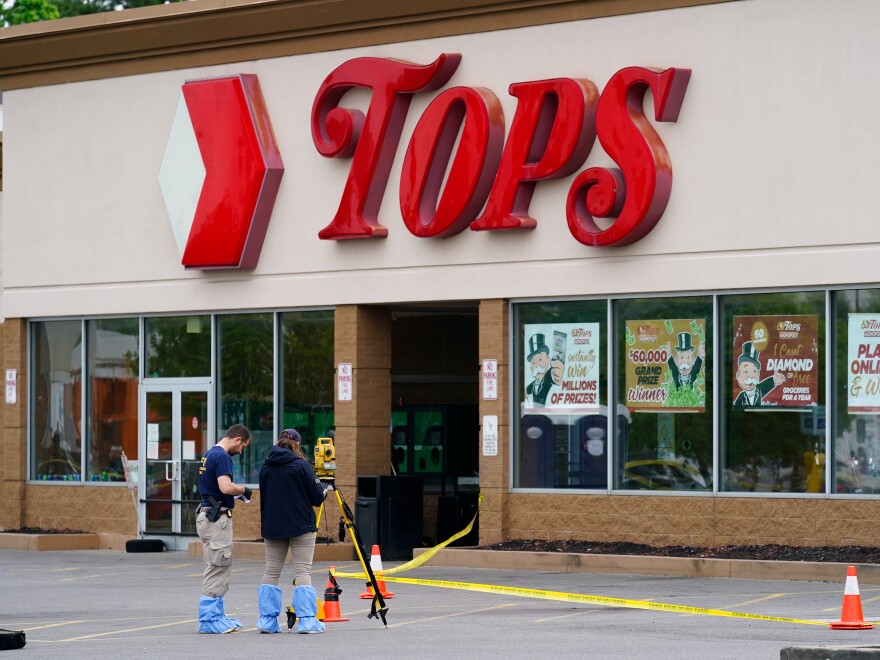Following the mass shooting at a grocery store in a predominantly Black neighborhood of Buffalo, N.Y., investigators say they are looking into a document published online filled with rants about race and the "replacement" theory.
The 180-page document, which was allegedly crafted by the Buffalo gunman, included parts lifted from other sources, according to an NPR analysis. Experts say this sort of mimicry is very common among mass shooters.
"It's not uncommon, especially in the neofascist space for people to take other people's work and sort of run with it," Matt Kriner, senior research scholar at the Middlebury Institute's Center on Terrorism, Extremism and Counterterrorism, told NPR.
Kriner contested claims that the gunman's document was full of plagiarized material and instead said the shooter had copied it.
What the Buffalo shooter engaged in with his copying was "the transference of ideas from one violent actor to another," Kriner said.
"So when we're analyzing it, what we're looking for is how much of that narrative is going directly towards the justification of violence that he carried out in Buffalo? And how much does that line up with the justification of violence that we saw in Christchurch and elsewhere," he added.
The 180-page document goes into detail about how an attack would be carried out, even pointing out why the gunman chose the Tops grocery store.
Detailed in the document, the shooter references what is called the "great replacement" — a white supremacist conspiracy theory that argues people of color are being brought into the U.S. and other Western countries to overtake and "replace" white voters.
The gunman who killed 51 worshippers in Christchurch, New Zealand at a mosque in 2019 also believed in this same theory; the suspected shooter at the Buffalo grocery store says the gunman in New Zealand was a source of inspiration.
Heather Williams, a senior policy researcher at the RAND Corporation, told NPR that the white supremacist movement today is simply "post-organizational."
"Most of those who ascribe to these types of violent extremism do not clearly associate themselves with an organized group. This, combined with the fact they can self-radicalize from the internet, complicates prevention," Williams said. "It is hard for law enforcement or others to identify that a person is considering or planning an act of violent extremism, and to prevent that event before it occurs."
The 18-year-old suspect has been charged with first-degree murder, as authorities say they are investigating the attack in Buffalo as a racially motivated hate crime and are considering a terrorism charge.
The FBI, separately, is investigating the incident as a hate crime and racially motivated violent extremism.
The similarity between the Buffalo shooter's alleged document and those from other extremists has left Kriner concerned.
"I think we're likely to see additional individuals popping up and doing something like this, possibly citing him, possibly citing Christchurch again, and what we're going to probably see is that they're very similar in nature in terms of what images they put on their weapons and on themselves, what they say why they're doing it and the manifestos they write," he said. "I think the primary thing we can do right now is to identify the actors for what they are."
Copyright 2022 NPR. To see more, visit https://www.npr.org.




